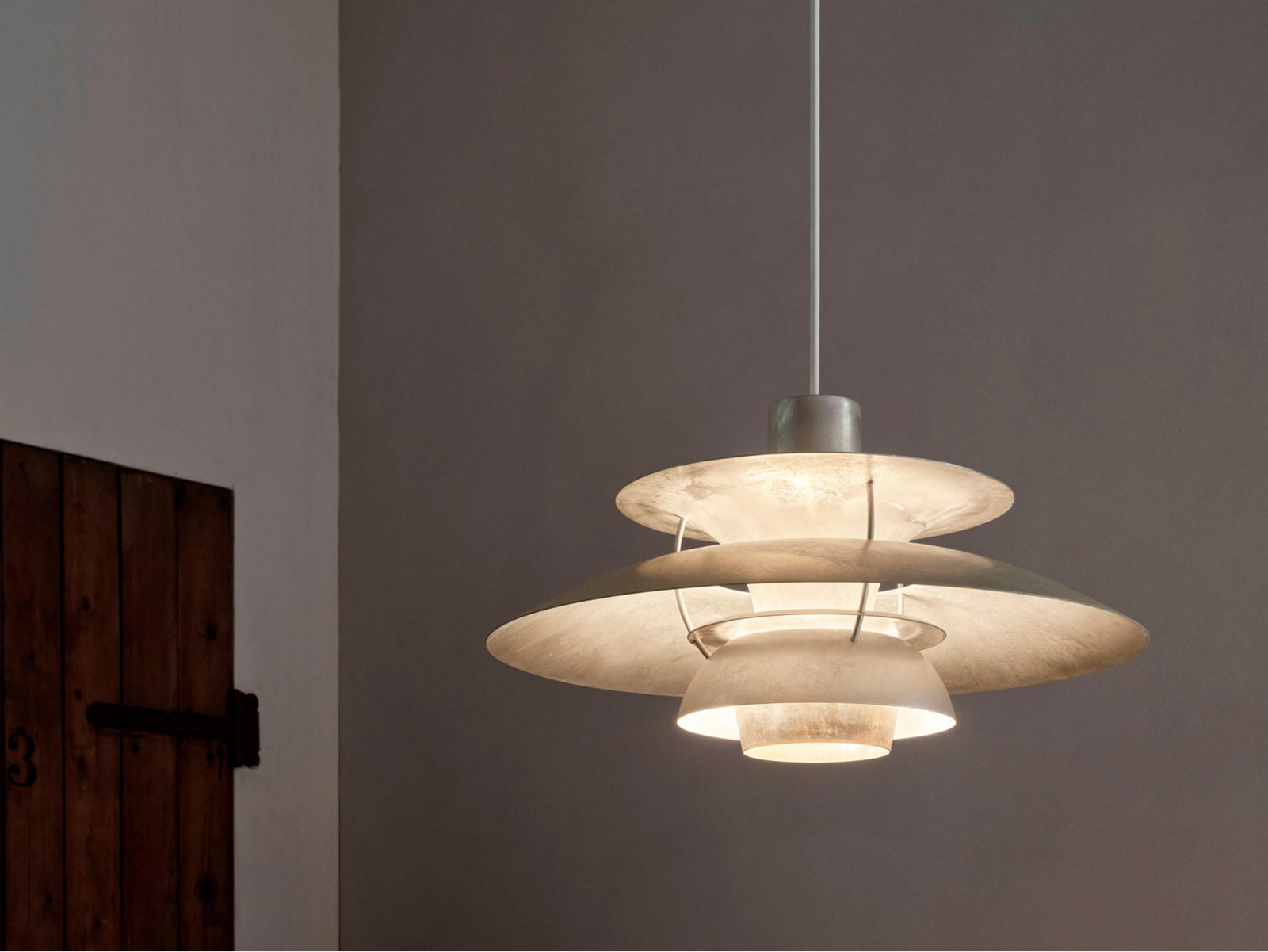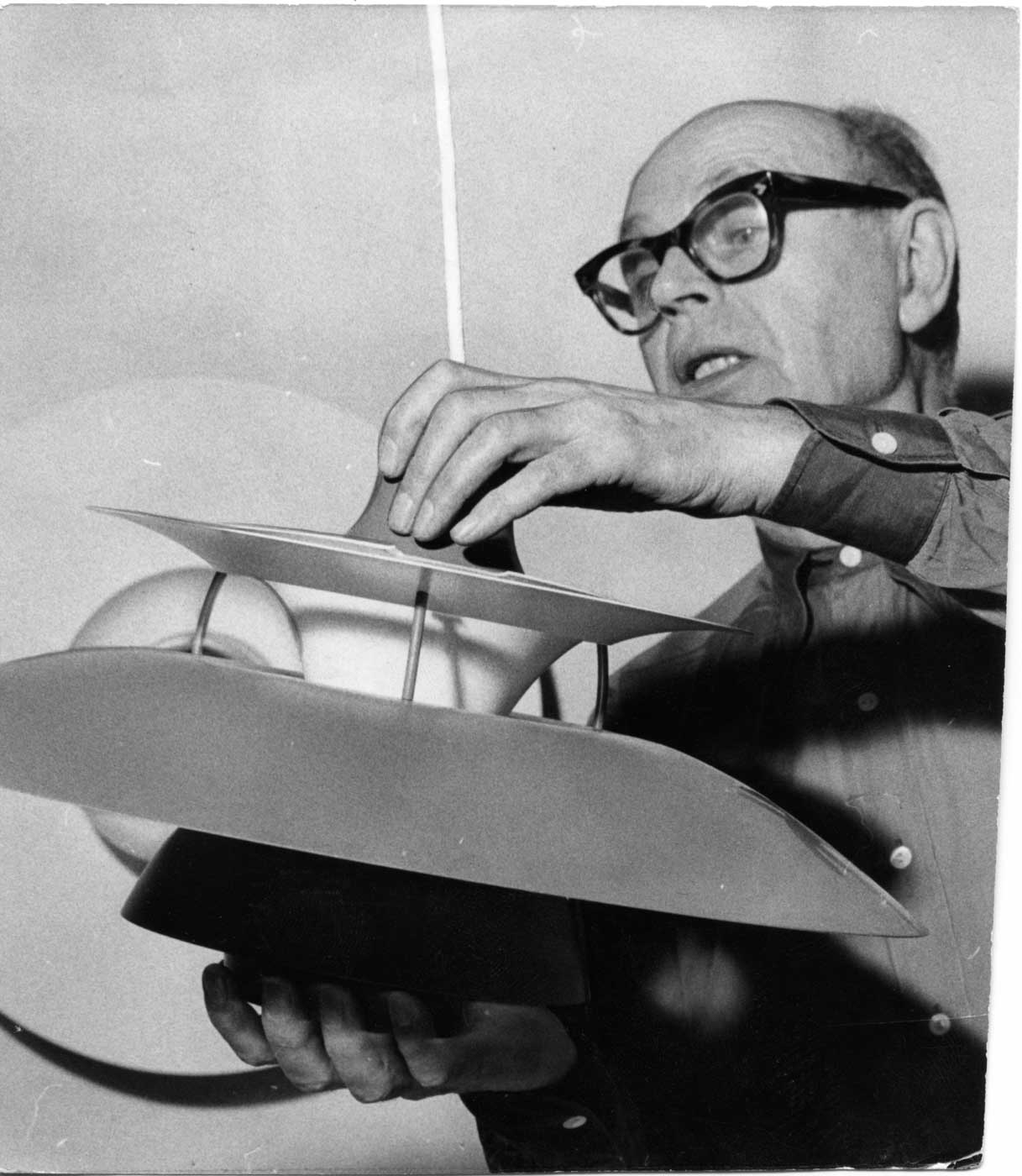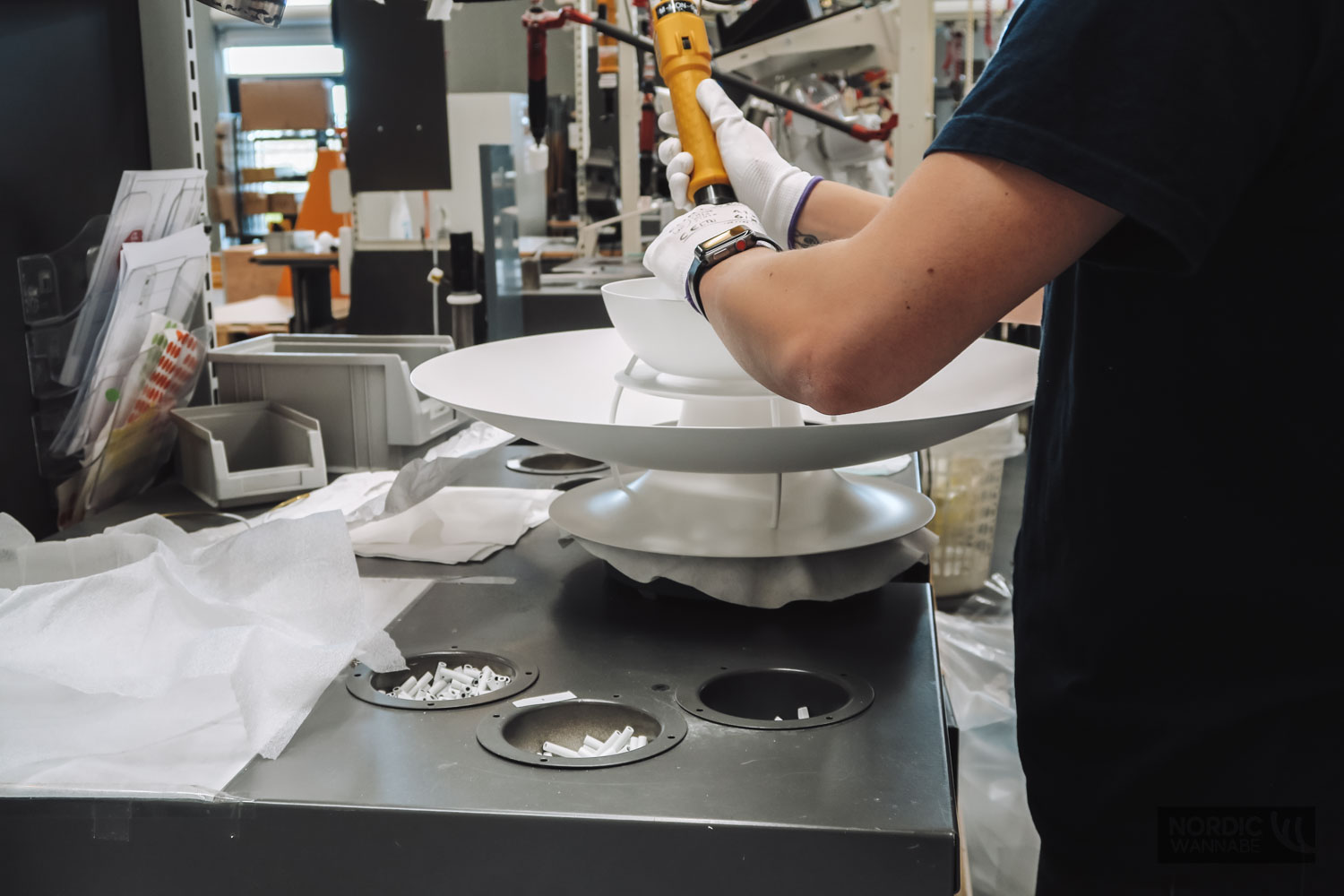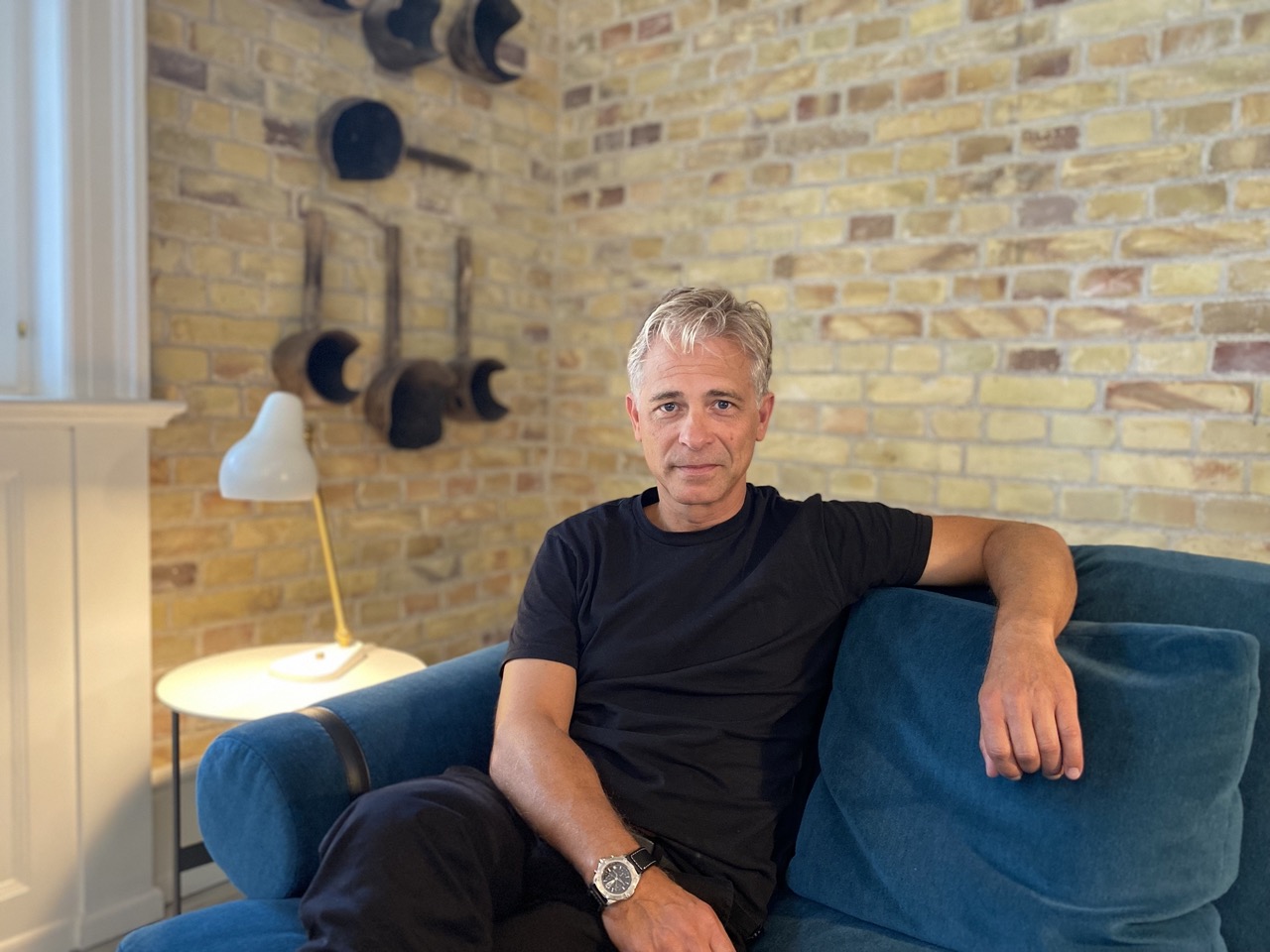Hej, In the world of design, certain iconic pieces becoming symbols of innovation, craftsmanship, and timeless beauty. The PH5 lamp, designed by Poul Henningsen, is such one Danish design classic. During my recent visit to Copenhagen, I had the privilege of sitting down with David Obel Rosenkvist, Chief Commercial & Creative Officer of Louis Poulsen, the renowned manufacturer of the PH5 lamp, to delve into the topic of replicas and understand why the original design holds true to sustainability values while replicas fall short.
Preserving Design Heritage with Louis Poulsen
Sie sehen gerade einen Platzhalterinhalt von Youtube. Um auf den eigentlichen Inhalt zuzugreifen, klicken Sie auf die Schaltfläche unten. Bitte beachten Sie, dass dabei Daten an Drittanbieter weitergegeben werden.
Louis Poulsen, as the manufacturer of the PH5 lamp, has played a vital role in preserving the design heritage of this iconic piece. By opting for the original PH5 lamp produced by Louis Poulsen, we actively contribute to the preservation of this heritage. We recognize the commitment of Louis Poulsen to upholding the original design’s integrity and the significant influence it has had on the design world.
Quality and Craftsmanship by Louis Poulsen

When it comes to quality and craftsmanship, Louis Poulsen sets the standard for excellence. The PH5 lamp, meticulously crafted by skilled artisans employed by Louis Poulsen, reflects their dedication to producing exceptional design classics. By choosing the original PH5 lamp from Louis Poulsen, we can be assured of its superior quality, longevity, and durability compared to replicas.
Authenticity and Longevity

Louis Poulsen’s original PH5 lamp carries the authenticity and legacy of Poul Henningsen’s vision. Each original piece embodies the history, emotions, and experiences associated with owning a genuine design classic. With Louis Poulsen’s commitment to producing timeless designs, the PH5 lamp becomes a cherished possession that can be enjoyed for generations, passing down its legacy and cultural significance.
Sustainable Manufacturing Practices by Louis Poulsen

Louis Poulsen takes sustainability seriously. As a responsible manufacturer, they prioritize sustainable manufacturing practices throughout their production process. From responsibly sourcing materials to minimizing waste and reducing their carbon footprint, Louis Poulsen ensures that the original PH5 lamp aligns with eco-friendly principles. By choosing the original PH5 lamp from Louis Poulsen, we indirectly support their commitment to sustainability and contribute to a more environmentally conscious design industry.
Ethical Considerations and Louis Poulsen
Replicas not only compromise the integrity of design classics but also raise ethical concerns. Louis Poulsen’s original PH5 lamp is a result of Poul Henningsen’s creative creation, and choosing replicas undermines the hard work and livelihood of the designers. By respecting intellectual property rights and opting for the original PH5 lamp from Louis Poulsen, we promote ethical practices, fair trade, and support the design community as a whole.
Interview with David Obel Rosenkvist from Louis Poulsen

Summary of the interview
David Obel Rosenkvist, a representative of Louis Poulsen, expresses concern about the prevalence of replicas in people’s homes and emphasizes the importance of original designs. He acknowledges the challenge faced by Louis Poulsen and other brands in combating the sale of fakes. To determine the authenticity of a product, he suggests buying directly from the brand or authorized dealers, conducting research on the brand’s website, and looking for recognizable marks on the product. The PH5 lamp is one of the most copied products from Louis Poulsen. However, replicas can vary in their level of imitation, from copying just the lamp to imitating the brand and packaging. Rosenkvist warns that fakes not only compromise the quality and value of the product but also undermine the work and business model of designers. He also mentions the potential risks associated with poorly made replicas. Louis Poulsen combats fakes by collaborating with organizations like the Danish Rights Alliance and employing digital tools to monitor the market. Education and raising awareness about the importance of original design are key strategies employed by Louis Poulsen. The company’s legal department actively pursues counterfeiters when necessary. Rosenkvist believes that protection of design rights is important in preserving cultural heritage and ensuring the quality and value of original products.
David Obel Rosenkvist: Yes, my name is David, and I’ve been with Louis Poulsen for the last six, seven years. Before that, I had a background with Fritz Hansen for many years and also with Rudolph Rasmussen. So I’ve been in the area of design and interior for quite some years. I have a background in marketing and consulting and have had the luck of working with some brilliant brands that have a long legacy and heritage and also have had quite an awareness of what we’re going to talk about today.
Okay. And do you know that one out of ten Danes have replicas in their homes? And what do you think about it?
David Obel Rosenkvist: Well, I think it’s sad. I think it’s wrong. And I think that I don’t know if all of them know that they have replicas or if they are aware that they made that deliberate decision, or if it’s something that they have been fooled into. But I think it’s sad that they don’t have the original designs that they should in some way appreciate since they decided to include them in their homes.
And do you think it’s a challenge for Louis Poulsen that so many people are currently buying more fakes or replicas?
David Obel Rosenkvist: I think, in general, it is a problem. It’s a big problem. I don’t think that Denmark is the biggest problem. I think it’s a worldwide issue that we mainly need to ensure that we enlighten and inform everybody, our customers and users, about the authenticity and the stories behind the design so that everybody can become aware. We need to make sure that through education and information, we support this as brands of heritage icons and also ensure that people can make a deliberate choice on what they’re selecting.
How can I, as an end customer, notice if my product is fake or original? Of course, when I go to the Louis Poulsen store, then I know it’s original, or when I go to a well-known shop. But when I buy something at a vintage market or on the web?
David Obel Rosenkvist: Well, in most cases, it’s easy. But I acknowledge that it can be difficult from time to time as well. I mean, if you’re buying a new piece, make sure that you are buying directly from the brand or that you are visiting the brand’s web shop or website to know who the authorized dealers are that are selling and distributing the brand. That’s an easy way to make sure that you are purchasing from someone who is actually selling the original designs and brand. In terms of vintage and resold products, it can be more challenging. Then you can do some research yourself by looking at the brand’s website and investigating and discovering the designs and the story behind them, as well as the knowledge of the materials used. You can get a feeling for that. And in most cases, almost all cases, there are some traces of authenticity on the products, which can be stickers, engraved serial numbers, or the brand’s logo. It can vary from time to time, especially for older products with a long history like ours. But there should be recognizable marks. So that would be a good start.
Do you have an idea which is the most copied product of Louis Poulsen?
David Obel Rosenkvist: I don’t know for sure, but probably the PH5 is an item that is copied a lot and has been for some time. It’s very famous, well-known worldwide, and recognized as probably one of the best lighting designs ever. It has been on the market since 1958, so it’s well-distributed, well-known, and appreciated by many. That’s often what makes others interested in making knockoffs of the product.
When I find a PH5, could it be that when there’s a sticker on it with Louis Poulsen, it’s also fake? Do people also copied the brand, or do they just copy the lamp as a Poul Henningsen lamp or the Jacobsen lamp, or do they say this is a PH5 from Louis Poulsen, and it’s a replica?
David Obel Rosenkvist: I think you should be prepared that everything can be copied, and the intentions of the counterfeiters can vary. In some cases, they might have the intent of staying within the legislation and claim that it’s a replica, depending on the geographical location, which can be legal or in a gray zone. Or they can simply have bad intentions and really try to copy everything, from the label to the packaging to the booklets that come along with it. So you cannot be sure unless you make sure that you are buying from an authorized dealership or the brand directly.
And when I find a lamp for a good price, is it an indicator for an original one?
David Obel Rosenkvist: I mean, if the price is too good, it’s usually an indicator that it’s too good to be true or someone is selling it on a vintage market without knowing its value. But that is pretty rare. I mean, in these cases, many who are reselling, even with Paul Henningsen for us, are debating resale prices or collectors who appreciate it, which can also be worth checking. I noticed that in some cases, there are just as many people interested in buying at a low price as there are offering the right price. But it gives a sense of what the value of these vintage or heritage products really is. But yes, in general, if it seems too good to be true, it probably is.
And from a customer’s point of view, what is the problem with fakes? Because when I want a lamp, I buy a lamp for €100
David Obel Rosenkvist: Oh, many things are wrong with it, both ethically and also in terms of the design rights that you are infringing on, but also with the products that you are getting at home. And all of them are equally bad. I would say, first and foremost, you’re getting a poor product, which is not nice. You would expect that these design icons have become icons for a reason, and that reason is often a timeless design that has proven to be relevant for many, many years, often many, many decades. But also, they are made with materials and quality and well-thought-through details that will make this product last for many, many years. It will age or develop a patina that enhances its beauty or it will preserve the beauty of the original product. And with a fake, you won’t have that. So, I mean, you end up risking being disappointed with your choice. That’s one part. The other part is that this is the work of brilliant minds. Brilliant minds that not only had an idea for a certain form but also had conceptual thinking, studying, and research, both in the design process and in the manufacturing process of how to create it.
For us, it’s very much about creating beautiful design that also provides beautiful light. So the quality of light and design are part of the same solution. And that’s a very delicate balance and very important for the entire product. So just having something that seems or looks close to it often won’t have the same light quality. So there are many different dimensions to it. And you can say the whole principle of working with designers, who make a living by creating unique original designs and benefit from royalties over the years, often not with high upfront payments, but the entire business model depends on the royalties that the product will earn over the years. This is something that the entire business model relies on. So the sustainable model for developing new designers, new unique design innovations, and great products for the future is a very delicate balance. That is what you are jeopardizing as well.
But when I have no money for the original, maybe I don’t care about all the design and arguments. Is it also maybe dangerous to have a replica because it involves electricity in the product? It could be made poorly in China, and then my house could catch fire or…
David Obel Rosenkvist: I don’t know. In the worst case, at least you won’t have any warranty or guarantee on how it will age, last, or how it has been produced. We are very thorough in terms of making sure that our products and designs can be repaired, that we have spare parts, that we can change electronic components because we know that the designs and products will last a lifetime or even longer if they are maintained properly or taken care of. They can have second lives, be resold, updated, and repaired. All of this is part of the original designs. So, yes, of course, you won’t have any of that with knockoffs or replicas. But it’s also a matter of what you are getting. I mean, what you appreciate about an original design is all of these dimensions together: the quality, the uniqueness, the design, the way it lasts, and the story behind it. And you won’t get that with a replica. So, if it’s a matter of budget, choose something else and consider it as an investment for life, for comfort, and something that you will treasure. I think you won’t treasure it if it is not an original product.
And you mentioned the story behind the product. I mean, Danish design is a big part of the DNA of Denmark and its people. What do you think about that? A handful of brands have the rights to Arne Jacobsen, Kay Bojesen, and the iconic designer Poul Henningsen. And people, especially in Denmark, have to spend more money on these products which are part of their culture and everything. Do you think this is right?
David Obel Rosenkvist: Yes, I do. Very much so. And I think it’s a way of taking care of that heritage and cultural legacy. By securing the rights to these designs, the original intent is protected, and the original designers or their families can benefit from their creations. It also ensures that the products are not compromised or devalued. So, I believe it’s in the best interest of everyone involved, including the original designers, the manufacturers, and, ultimately, the customers.
Why are fakes so cheap in comparison to the original ones?
David Obel Rosenkvist: Well, in most cases, manufacturers who produce fake products are primarily focused on reducing costs. They aim to replicate the appearance of the original without investing in the knowledge, brand reputation, or the creative contribution that goes into the authentic design. They attempt to create a product that looks similar but lacks the quality and value of the original. By cutting corners and disregarding safety regulations, they can offer their knockoffs at lower prices, trying to deceive customers into believing they are purchasing the genuine product.
And one last question for this part. As an iconic design brand, you produce in Denmark. Could you also produce in China to lower the prices of your products? Would that be an option for you?
David Obel Rosenkvist: While we primarily manufacture our products in Denmark, we also source components from various parts of the world, including Asia. For example, some of our glass components are mouth-blown in Italy, while electronic components come from Asia and certain parts are made in Taiwan. Our focus is always on maintaining the highest quality standards and ensuring that the original intent of the design is preserved. If we can achieve the same level of quality at better prices, we would consider production in other locations. Chinese manufacturing, for instance, can be excellent when it adheres to high-quality standards. However, knockoffs, whether produced in China or elsewhere, prioritize low manufacturing costs over quality, which ultimately compromises the value of the product.
Now let’s move on to what you are doing against fakes and replicas. If you can explain, maybe what role the Danish Rights Alliance plays, as you are a member of it. How are you combating fakes and monitoring the market?
David Obel Rosenkvist: Absolutely. We actively collaborate with other brands facing similar challenges through organizations like the Danish Rights Alliance. These networks allow us to pool resources and knowledge, and together we work on implementing digital tools and automated systems to scan and monitor the market. The Danish Rights Alliance, for example, utilizes software to detect and identify counterfeit products. However, it’s important to note that individual brands also need to take action independently. We send cease and desist letters and, if necessary, pursue legal action against counterfeiters. It’s an ongoing battle, as shutting down one operation often leads to the emergence of others. Rapid detection and response are crucial, and that’s where software and digital capabilities come into play. At Louis Poulsen, we have a legal department that works on these matters, but it’s integrated within our existing structures and tools due to the demands and size of our company.
That’s interesting. Have you encountered any challenges while raising awareness about the importance of original products in the American market? How did people respond to your message?
David Obel Rosenkvist: Initially, there was frustration when I was working with Fritz Hansen in the United States. We found instances where architects or specifiers had unknowingly switched to knockoff products to reduce costs, without realizing the quality and authenticity differences. However, when we highlighted this issue, both European and American brands expressed support. In the United States, the protection of rights in creative fields like fashion, art, movies, and music has a long tradition. It was surprising to discover the lack of similar protection for designs, but once the gap was identified, there was significant backing for our cause. Education became a key focus. We established networks, organized educational programs at various levels, and engaged architects, dealers, and customers in discussions about the importance of original design. It was about creating awareness and taking a stand.
When it comes to education, who do you primarily target? End customers, dealers, or through marketing campaigns?
David Obel Rosenkvist: The focus of education extends to different stakeholders. In the beginning, it was crucial to educate brands on what actions they could take. The networks and memberships, like the Danish Rights Alliance, provided a platform for such education. Additionally, education targeted specifiers, customers, and even students. The aim was to inform them about the significance of authentic design and the implications of purchasing knockoff products. We wanted to create a culture where supporting authentic design became a topic of discussion among dealers, architects, and their clients, leaving no room for compromise.
That’s great to hear. Besides education, what other measures do you take to combat fakes? Do you employ dedicated staff or external agencies? Is the Danish Rights Alliance involved in these activities?
The Danish Rights Alliance plays a vital role in monitoring and scanning the market with the help of software. They assist in identifying counterfeit products and taking initial actions. However, as individual brands, we also need to take responsibility. We have our legal department at Louis Poulsen that deals with these matters on a daily basis. While we don’t have full-time positions dedicated solely to this issue, we integrate anti-counterfeiting efforts into our existing structure and utilize the tools available. It’s important to remember that tackling fakes is an ongoing process, and we need to act swiftly when we come across any infringements.
It’s quite surprising to me that well-known shops sometimes unknowingly sell fake products. Do you think the shop owners or buyers are sometimes unaware of the authenticity of the products they acquire?
David Obel Rosenkvist: Professional procurement departments and distribution outlets should conduct due diligence when sourcing products. If they become aware of counterfeit products and fail to take action, they are acting in bad faith. However, there might be instances where individuals within these organizations make honest mistakes in good faith. In Europe, with the awareness and legislation we have, anyone involved in the buying and selling of interior designs should be knowledgeable about the authenticity of the products they offer.
It is true that when I, as a customer, resell a fake product, that this is not legal.
David Obel Rosenkvist: Yes. I mean, there has been a case before where the UK was ratifying European legislation. It could be legal as a private customer to acquire, but not to resell. I mean, you would be doing an illegal act if you were promoting, showing, or selling. So, in that way, you can say that the item becomes worthless in a sense. What is most often the case with these heritage design icons is that they keep their value very well. And that is, of course, not the case with an item that you are not even allowed to sell.
What should I do when I love Louis Poulsen and I want to have a piece, but I don’t have the money? Do you have any plans to make it more available for a larger target group, like renting or something? I don’t know. You had a campaign where you bought back old products and then refurbished them, but they still weren’t cheap.
David Obel Rosenkvist: Um, I think that, of course, buying products of very high quality and design value is expensive. The nature of the quality of the product means that they come at a high price. And I think for many people, not only wealthy people, this becomes a passion and a priority. You save up money to acquire them because if it’s part of your home and the surroundings where you spend most of your time, it’s a matter of looking at the value it brings to your daily life and also the resale value in terms of passing it on to the next generation or selling it at auctions or vintage stores. These pieces tend to hold their price. If you’re unable to fill your house with these iconic pieces, be aware of which pieces you really want to acquire and make an effort to save for them. If you can’t afford to buy them new, look for vintage options where the price might be somewhat lower due to rarity. These pieces will still hold their value and appreciate over time. So, there are many ways you can approach it until you can afford it. Live with something else but not a copy. Instead, consider other original designs that are made at a lower cost.
But can you understand people who buy a fake product because they love it so much but can’t afford it?
David Obel Rosenkvist: I can’t. I simply can’t because the appreciation of that product cannot be the same. It will not be the same. It’s like a make-believe for others and yourself. And I don’t believe that you can truly appreciate, whether it’s a watch or any other product. The reason for appreciation lies in the product’s details, quality, origin, and the story behind it. You might be able to fool yourself and others for a while or from a distance, but you won’t have the genuine pleasure of it.
And maybe buying fakes also harms your community or country when Danish people lose their jobs and all that stuff.
David Obel Rosenkvist: Yes, I think it affects the entire infrastructure and sustainability of having unique designs being created. It has an impact on multiple levels. In the long run, it’s not sustainable for anyone involved in these priorities.
Thank you, David. Do you have anything else to add?
David Obel Rosenkvist: Well, just that in this age of being more aware of the footprint we leave on this planet, on sustainability, and on the responsible use of resources, being aware and investing in high-quality products that will last is not only beneficial for your own enjoyment, appreciation, and value of the design, but it’s also a sustainable choice for our resources and the world. These are products that will last for many years, often a lifetime, and it’s a much better way of consuming.





